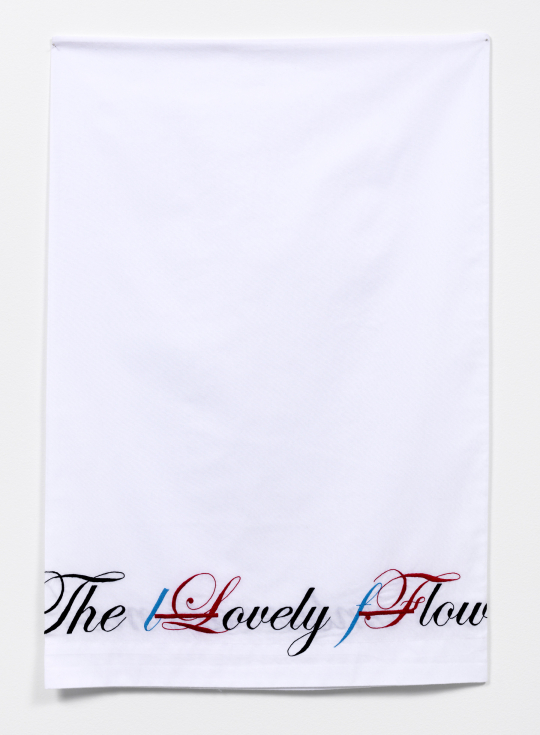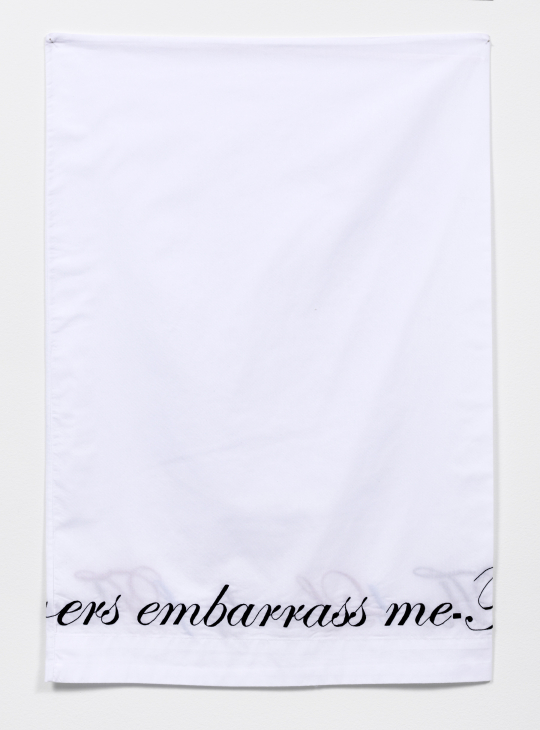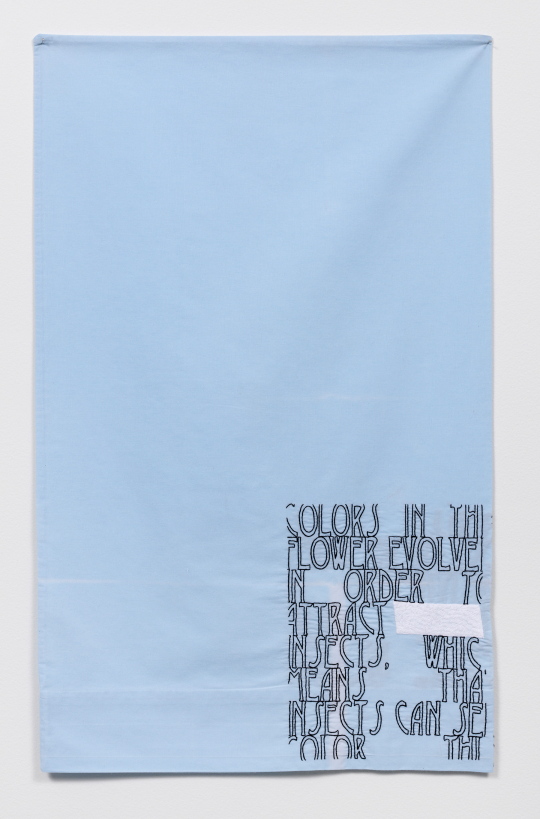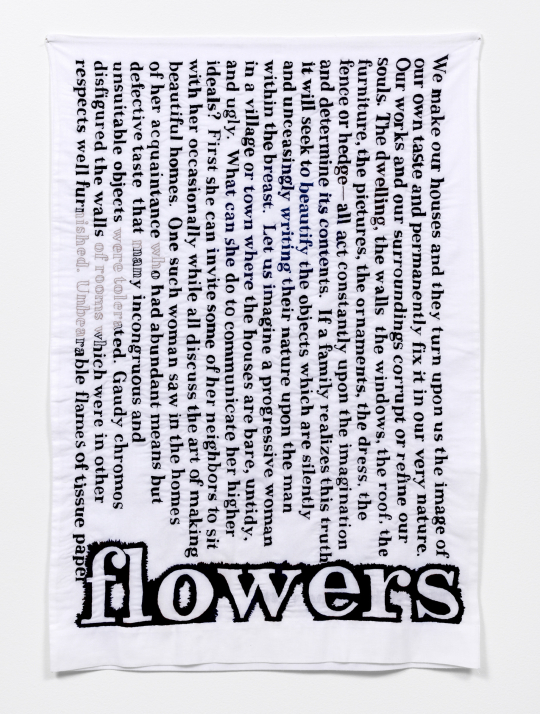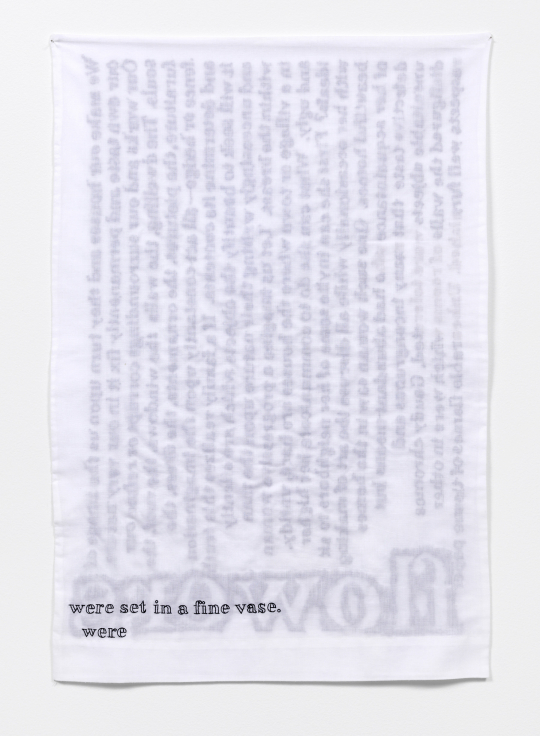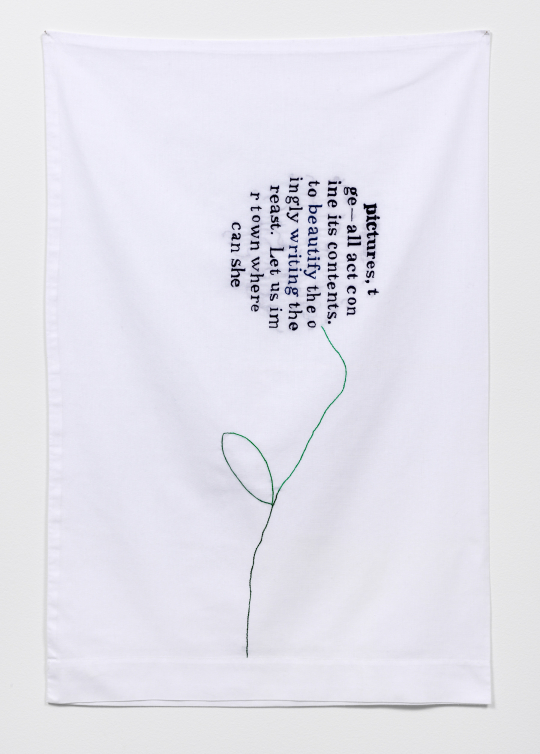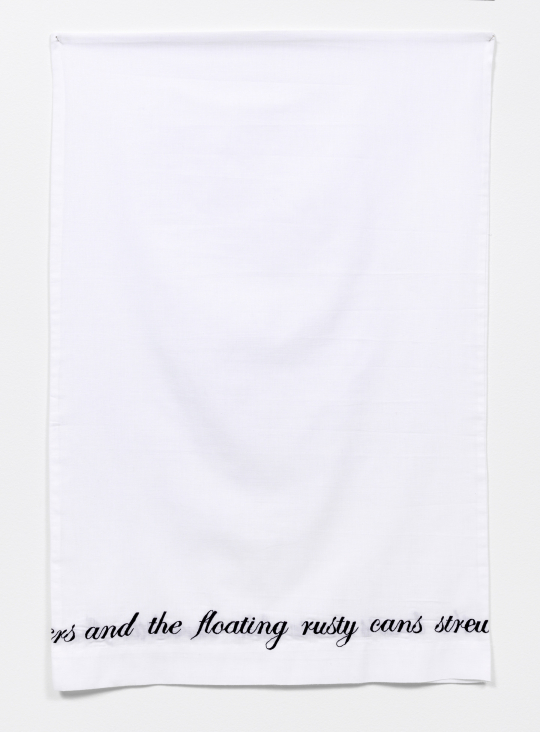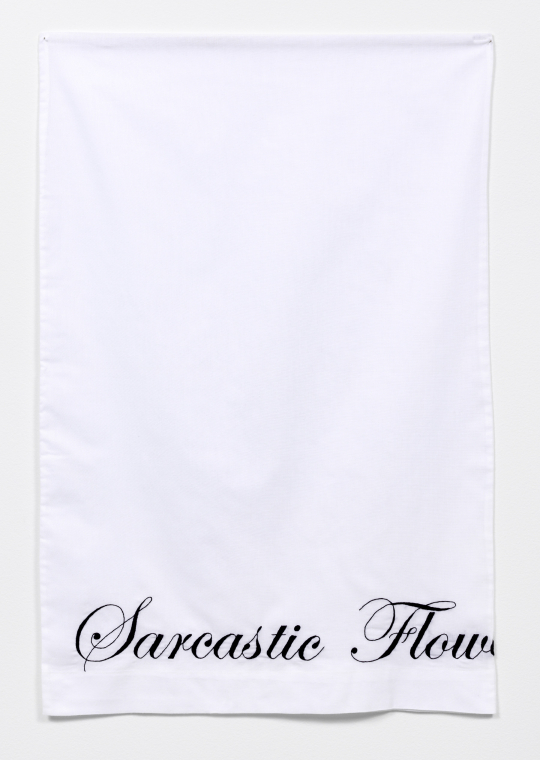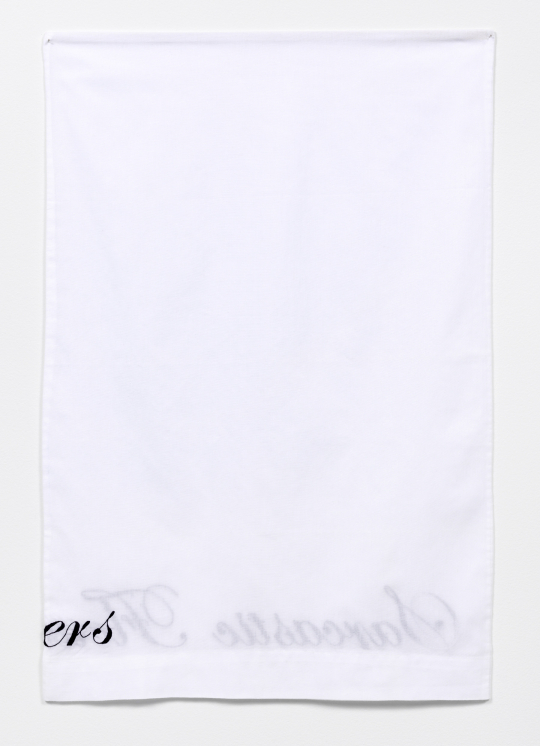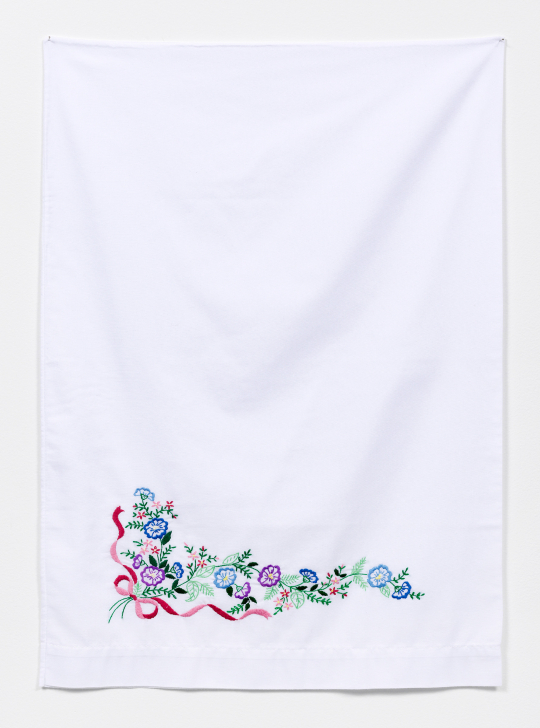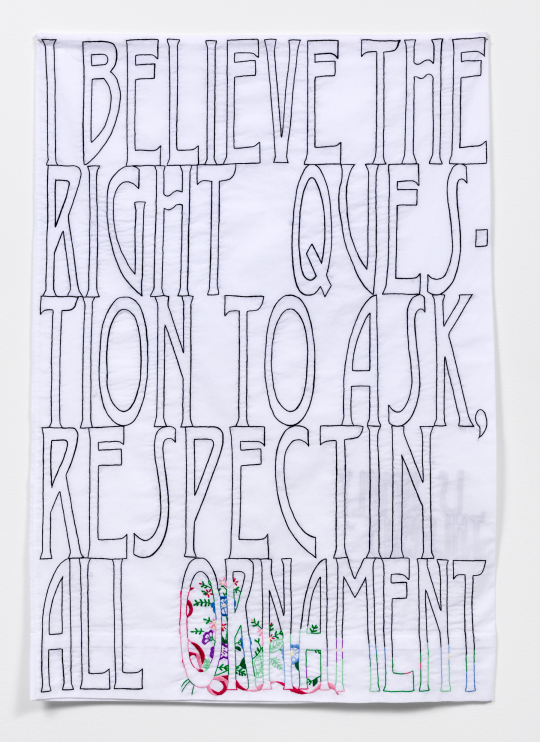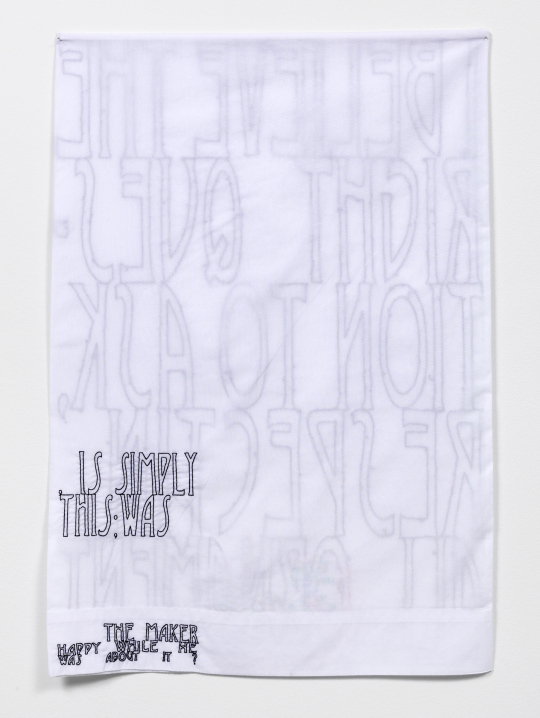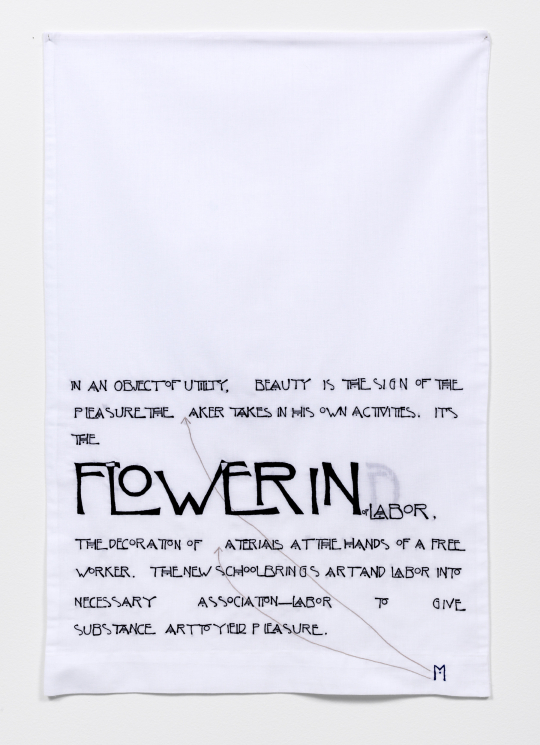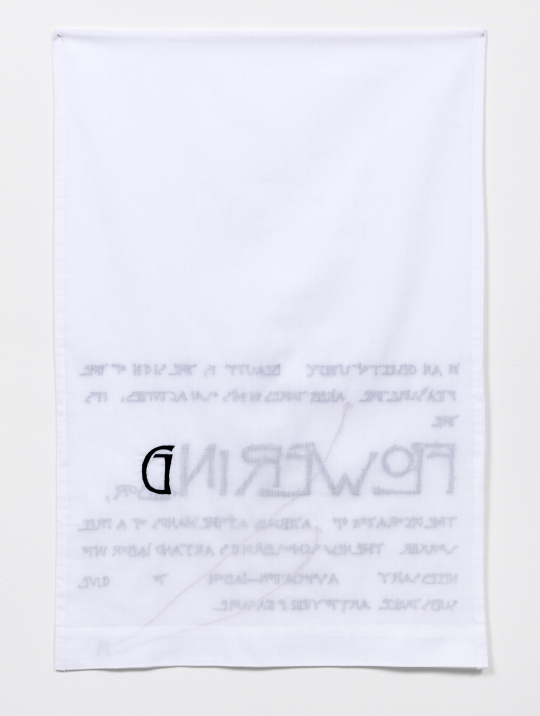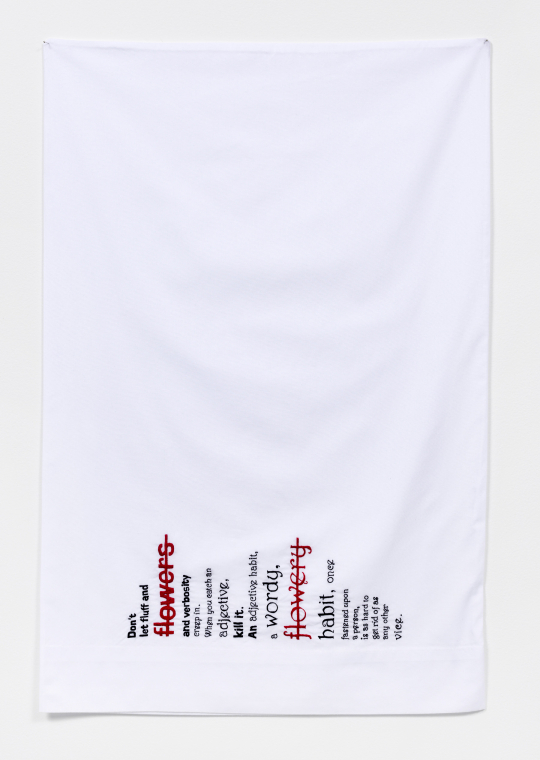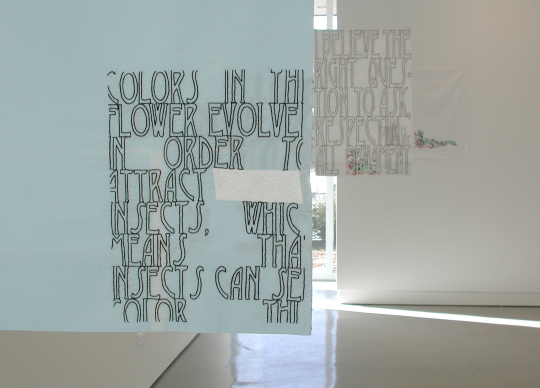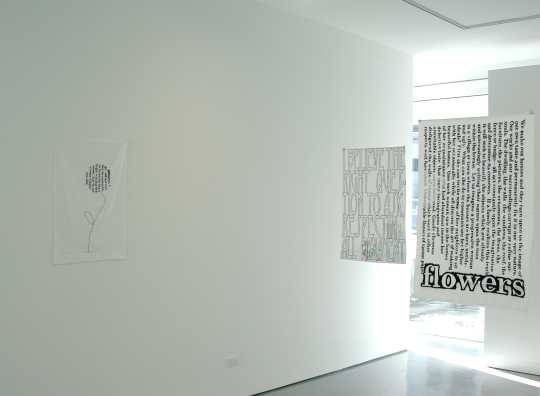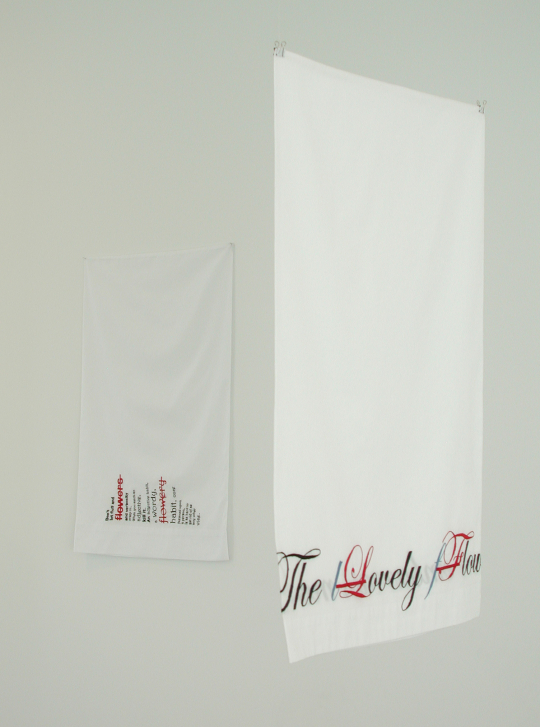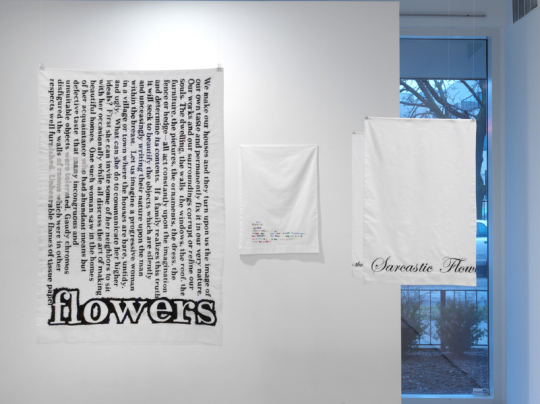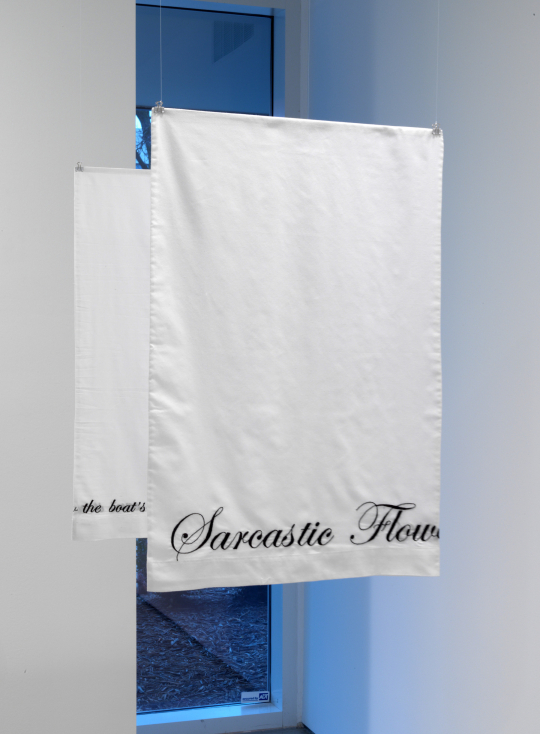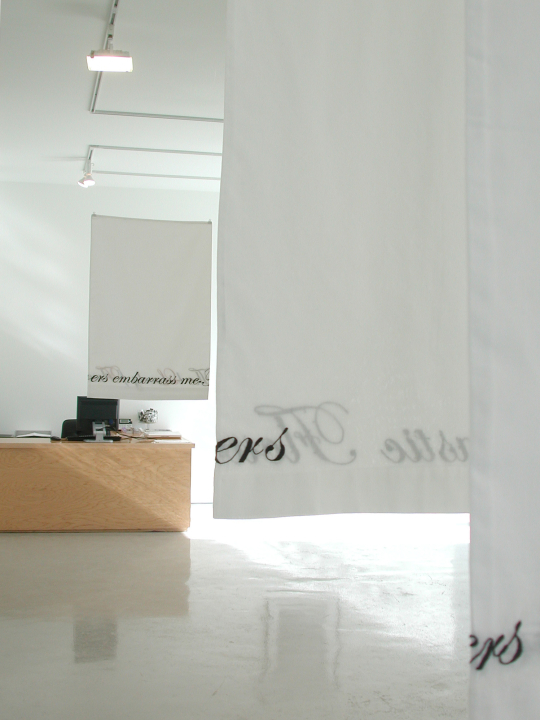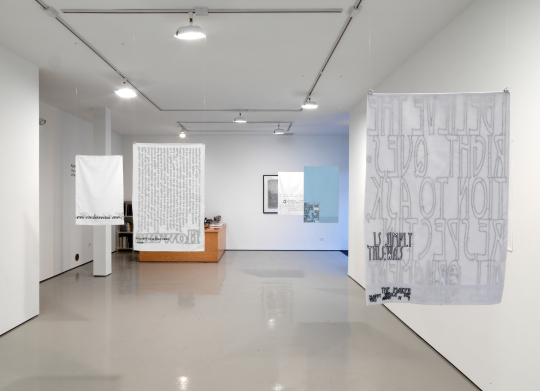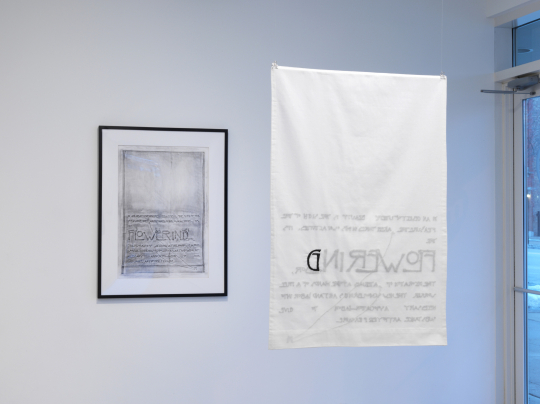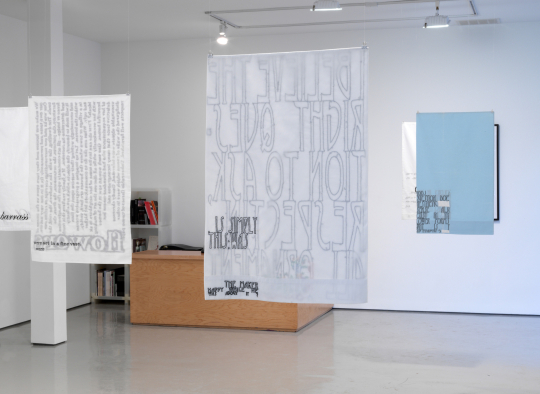The Domestic Partnership of Heaven and Hell, 2011
Statement
The Domestic Partnership of Heaven and Hell
September 9, 2011 to January 28, 2012
The title of this series is an adaptation of William Blake’s The Marriage of Heaven and Hell, in which Blake builds a moral universe where heaven and hell are too symbiotically entwined to be considered opposites. By combining the tactics and aesthetics of conceptual art with the tropes of domestic decoration, Reimer pushes concept and material, art and labor, language and pattern, utopia and realism, heaven and hell into the same space.
In this body of work, Reimer exchanges language for the imagery of stylized nature typical of domestic decoration. Starting with the literalism of replacing an image of flowers with the word “flowers”, Reimer embroiders quotations in which that word appears on pillowcases. Ranging from the poetic to the pedagogical, these quotations address the practices of craft and decoration and the assumptions and debates surrounding those practices, with several quotes taken from scholars and philosophers of the Arts and Crafts Movement. Reimer is interested in revisiting that movement’s ideas about craft, manual labor, learning, domesticity, etc., as they translate into the contemporary digital age.
The arrangement of the text on the pillowcases borrows equally from the traditions of embroidered pillowcase decoration and the formatting of language on computer screens, for example the blue boxing of selected words or the red strike-through of deletions when tracking changes.
Embroidering the quotations onto pillowcases is both an examination via embodiment or acting out of the ideas, and an attempt to put art into the realm of private domestic experience traditionally occupied by craft. The pillowcases are potentially useful objects.
Quotes
NOTES:
“The lovely flowers embarrass me.”
Emily Dickinson, letter to Lucretia Bullard, about 1864
“Colors in the flower evolved in order to attract insects, which means that insects can see color. This adds a question: does aesthetic sense also exist in the lower forms? Why is it aesthetic?”
Richard P. Feynman, 1981 interview BBC television program Horizon
“We make our houses and they turn upon us the image of our own taste and permanently fix it in our very nature. Our works and our surroundings corrupt or refine our souls. The dwelling, the walls, the windows, the roof, the furniture, the pictures, the ornaments, the dress, the fence or hedge — Âall act constantly upon the imagination and determine its contents. If a family realizes this truth it will seek to beautify the objects which are silently and unceasingly writing their nature upon the man within the breast. Let us imagine a progressive woman in a village or town where the houses are bare, untidy, and ugly. What can she do to communicate her higher ideals? First she can invite some of her neighbors to sit with her occasionally while all discuss the art of making beautiful homes. One such woman saw in the homes of her acquaintance who had abundant means but defective taste that many incongruous and unsuitable objects were tolerated. Gaudy chromos disfigured the walls of rooms which were in other respects well furnished. Unbearable flames of tissue paper flowers were set in a fine vase.”
Charles Richmond Henderson, The Social Spirit of America, 1908
“and rusty can strew the boat’s route like sarcastic flowers“
Tom McCarthy, C, 2010
“I believe the right question to ask, respecting all ornament, is simply this; was the maker happy while he was about it?”
John Ruskin, The Seven Lamps of Architecture, 1849
“…the flower garden ablaze with beds of bright bloom interspersed with strawberries and tomatoes, the trees rising like a green wall, and exclaimed, “How beautiful!””
Gene Stratton-Porter, Girl of the Limberlost, 1909
“In an object of utility beauty is the sign of the pleasure the maker takes in his own activities. It is the flowering of labor, the decoration of materials at the hand of a free workman. The new school brings art and labor into necessary association–labor to give substance, art to yield pleasure.”
Oscar Lowell Triggs, “A School of Industrial Art,” The Craftsman, 1903
“Don’t let fluff and flowers and verbosity creep in. When you catch an adjective, kill it. An adjective habit, a wordy, flowery habit, once fastened upon a person, is as hard to get rid of as any other vice.”
Mark Twain, 1880, letter to David Watt Bowser
Many many thanks to Jackie Neikamp, Robert Peters, Gladys Reimer, and Barbara Wakefield for their invaluable assistance with this series.
